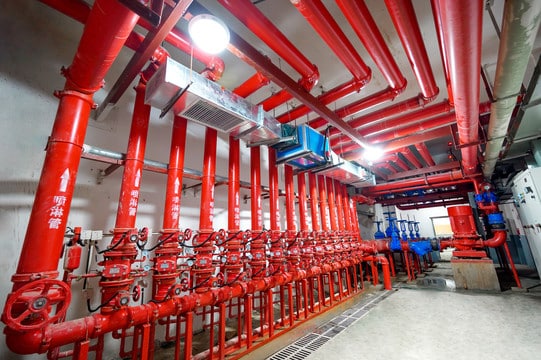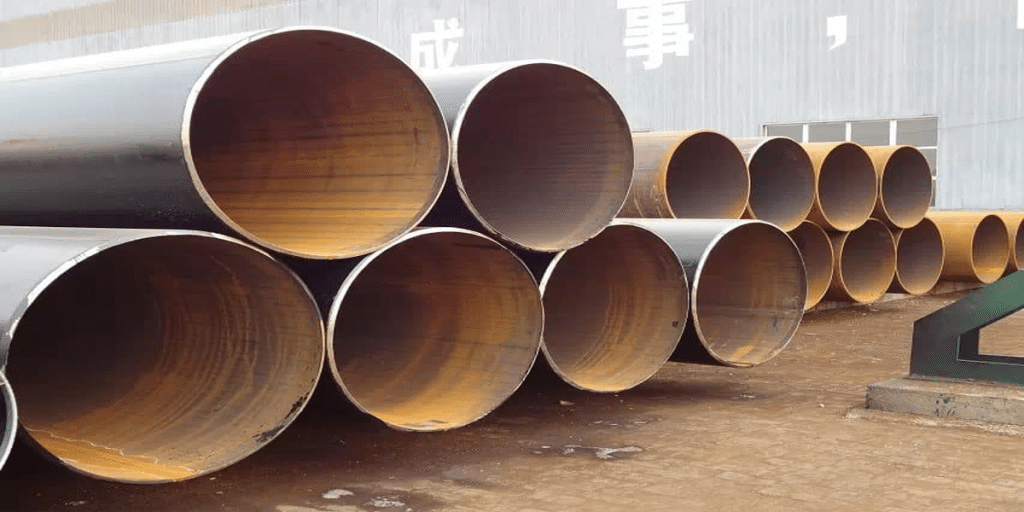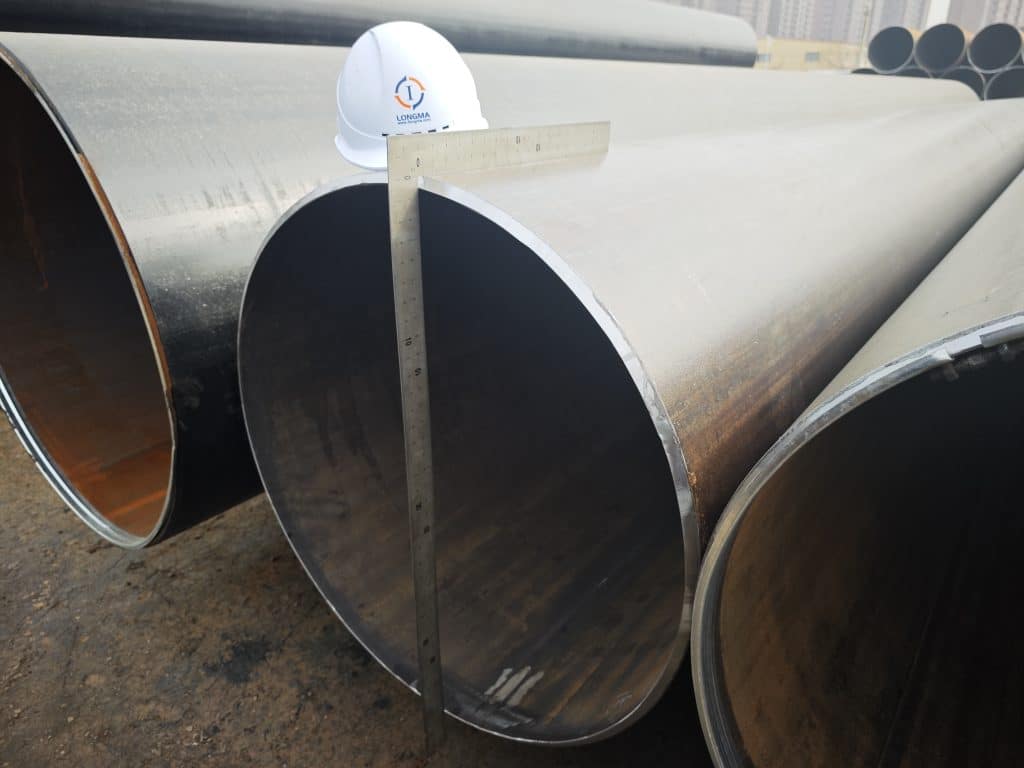- 1. Why Is “Chemical Analysis” More Important Than Just Reviewing Certificates?
- 2. Key Clauses in A53
- 3. Common Chemical Composition Limits (Excerpted from ASTM A53 Table 1)
- 4. Verification Process: Step-by-Step Implementation (Can Be Directly Added to Procurement/Acceptance Checklists)
- 5. Common Pain Points for Buyers and How to Mitigate Risks with Standardized Processes
- 6. Why Choose LONGMA
- 7. Conclusion
To verify the steel grade and chemical composition of ASTM A53 steel pipes, one must rely on Table 1 (Chemical Composition Limits) of ASTM A53 for criteria, follow ASTM E1806 for sampling, and adopt ASTM-recommended reference methods for testing—such as Spark Emission Spectroscopy/OES (per ASTM E415), Combustion Method/Thermal Analysis (per ASTM E1019), and chemical analysis practices outlined in ASTM A751. Only by sampling, analyzing, and retaining traceable reports in accordance with these specifications can buyers transform “claims of compliance” into verifiable, tangible evidence.
Why Is “Chemical Analysis” More Important Than Just Reviewing Certificates?
Many quality disputes stem not from surface defects, but from abnormal mechanical properties, poor heat treatment response, or long-term corrosion/stress corrosion issues caused by excessive chemical composition or improper distribution of alloying elements. ASTM A53 explicitly requires chemical composition to meet Table 1 and incorporates provisions for product analysis, sample extraction, and submission into the standard. Thus, a manufacturer’s written statement alone is far less reliable than a test report issued in compliance with standards.
Key Clauses in A53
- Chemical Composition Requirements: ASTM A53 Table 1 specifies the maximum allowable values for carbon (C), manganese (Mn), phosphorus (P), sulfur (S), silicon (Si), and small amounts of alloying elements (see the table below). The standard also mandates that chemical analysis be performed in accordance with ASTM A751.
- Buyer’s Sampling Right: ASTM A53 permits buyers to “randomly sample 2 pipes per batch of 500 pipes for testing.” If results are non-compliant, sampling shall be expanded (to double the original sample size), and disposal shall follow standard procedures.
- Referenced Methods: ASTM A53 relies on ASTM E1806 (sampling) and ASTM A751 (chemical analysis and reporting specifications). Therefore, compliance judgments cannot be made independently of these documents.
Common Chemical Composition Limits (Excerpted from ASTM A53 Table 1)
| Element | Grade A (Type S/E) Max. % | Grade B (Type S/E) Max. % |
| Carbon (C) | 0.25 | 0.30 |
| Manganese (Mn) | 0.95 | 1.20 |
| Phosphorus (P) | 0.05 | 0.05 |
| Sulfur (S) | 0.045 | 0.045 |
| Silicon (Si) | ≥0.10 (General Requirement) | ≥0.10 |
| Cu/Ni/Cr/Mo/V (Single) | ≤0.40/0.40/0.40/0.15/0.08 | ≤0.40/0.40/0.40/0.15/0.08 |
Note: The above is a common excerpt. Please refer to the version/revision number specified in your purchase contract and the original ASTM table for official compliance.
Verification Process: Step-by-Step Implementation (Can Be Directly Added to Procurement/Acceptance Checklists)
- Explicitly Define Chemical Requirements and Acceptance Criteria in Purchase Orders: Specify the ASTM A53 version (e.g., A53/A53M-20) and contractual acceptance criteria (Table 1) to avoid ambiguity.
- Conduct Formal Sampling per ASTM E1806: Sample extraction shall be agreed upon by both parties or performed on-site upon delivery in accordance with ASTM E1806, preventing disputes caused by “misaligned sampling.”
- Select Compliant Testing Methods:
-
- OES / Spark Emission Spectroscopy (ASTM E415): Fast, capable of detecting over 20 elements simultaneously, and preferred for batch inspection during factory shipment.
- Combustion / Gas Phase / Thermal Analysis (ASTM E1019): Used for accurate determination of key light elements such as C, S, N, and O.
- ASTM A751 Guidelines: Define report formats, deviation handling, and priority of reference methods.
(Supplement: Handheld XRF is suitable for rapid screening of incoming materials, but laboratory-verified methods are often required for final confirmation in contractual acceptance.)
- Result Judgment and Re-Testing: If initial test results are non-compliant, expand the sample size for re-testing (typically double the original sample size) per ASTM A53 requirements, and conduct re-testing in a mutually recognized laboratory until a conclusion is reached.
- Documentation and MTC: Compliant batches shall be accompanied by a Material Test Certificate (MTC), chemical analysis report, sampling records, and calibration certificates (for equipment/standard blocks) to facilitate project acceptance and quality traceability.
Common Pain Points for Buyers and How to Mitigate Risks with Standardized Processes
- Pain Point 1: Certificates Cannot Be Verified in Practice→ Solution: Require original analysis reports, laboratory stamps, and equipment calibration records (per ASTM A751 requirements).
- Pain Point 2: Confusion Between Off-the-Shelf and Substitute Materials→ Solution: Conduct on-site OES rapid comparison via sampling per ASTM E1806 upon delivery; if necessary, submit samples to a third-party laboratory for re-testing.
- Pain Point 3: Batch-to-Batch Variations in Production→ Solution: Agree with suppliers on in-batch sampling frequency and non-compliance handling procedures (clearly specified in contract terms).
Why Choose LONGMA
As a pipe manufacturer with over 20 years of production experience, LONGMA goes beyond “compliance in slogans”—we implement ASTM requirements throughout our production line and documentation:
- In-House Laboratory and Equipment: Equipped with spark emission spectroscopy (OES) and combustion analysis (C/S) equipment, with retained equipment calibration records (executed per ASTM E415 / E1019 / A751).
- Standardized Sampling: Sampling and submission for testing are performed in accordance with ASTM E1806, and inspection records can be provided alongside the MTC for customer verification.
- Traceable Inspection Chain: Each shipped batch includes a chemical composition report, and original spectra, sample numbers, and inspector signatures are also available—reducing potential disputes and acceptance risks later.
Conclusion
To verify the steel grade and chemical composition of ASTM A53 steel pipes, the key steps are: clearly specify “standards, sampling methods, testing methods, and report formats” in purchase orders, and require traceable laboratory reports. LONGMA can provide a complete inspection package (including MTC and original spectra) executed in accordance with ASTM A53 / E1806 / E415 / E1019 / A751.






